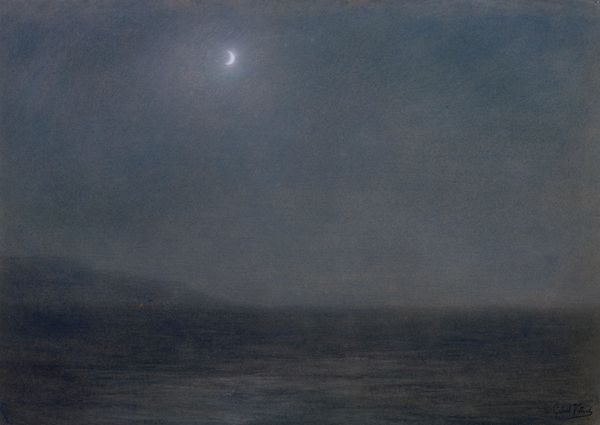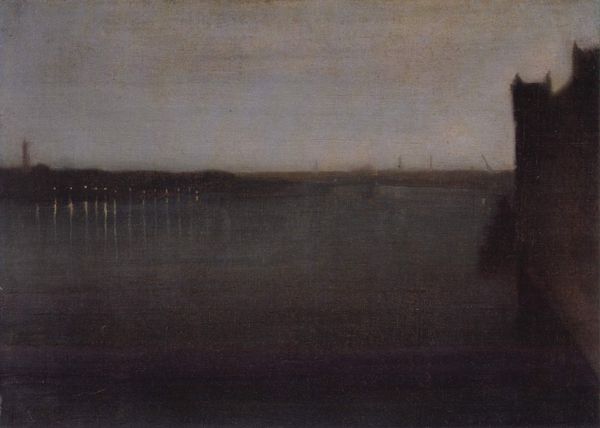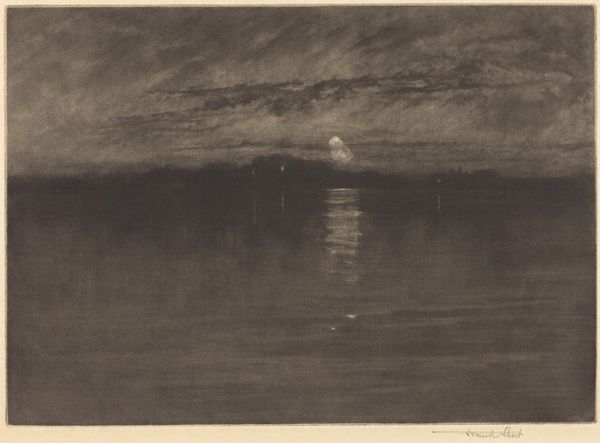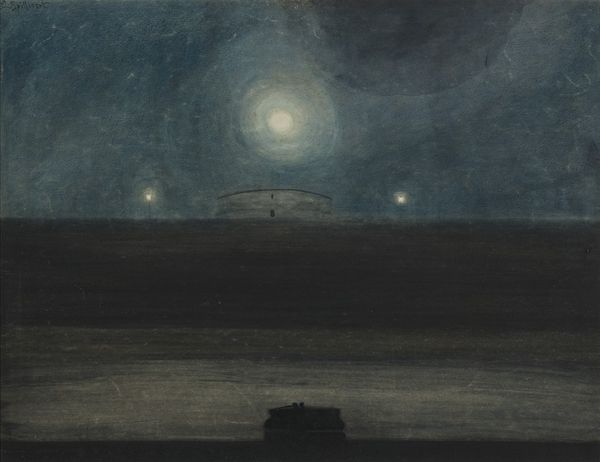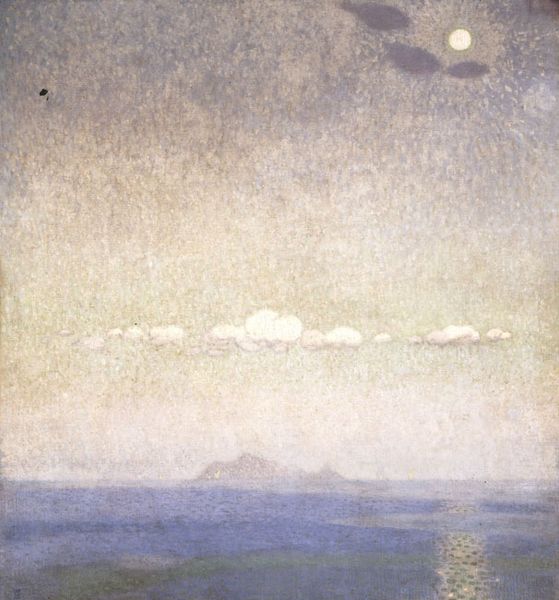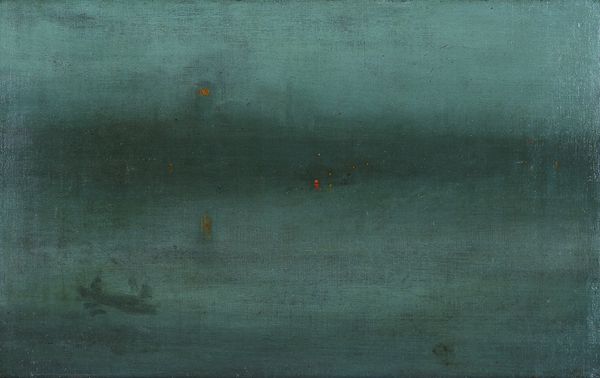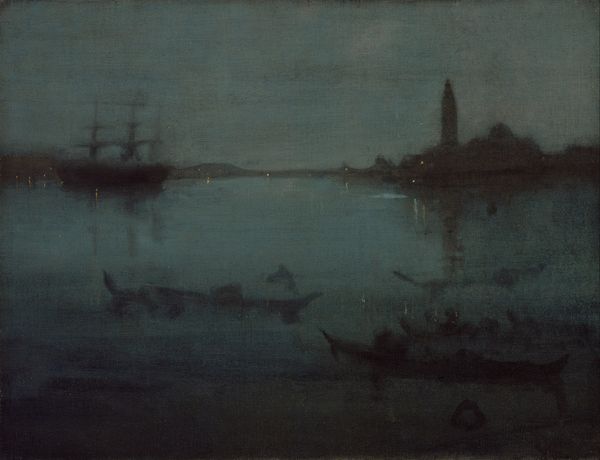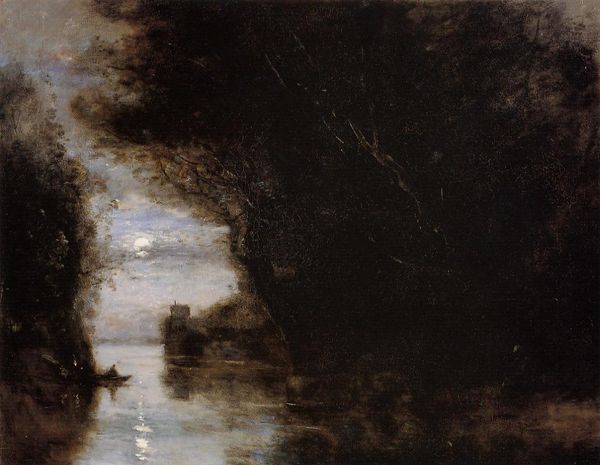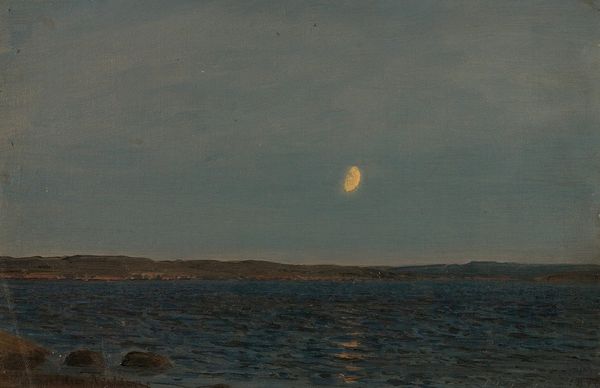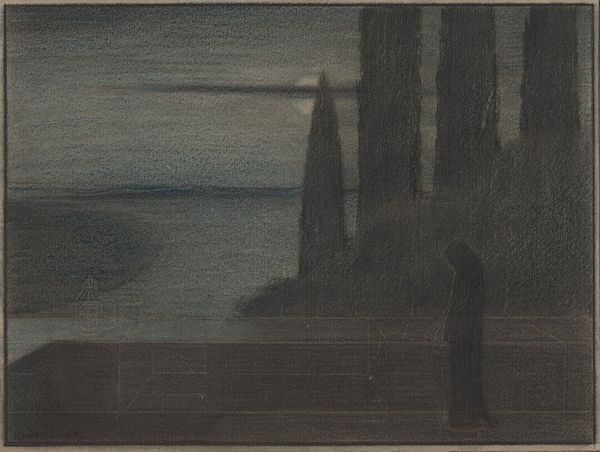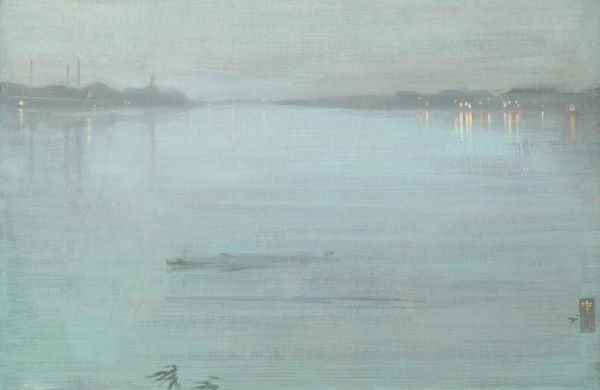
painting, oil-paint
#
impressionistic
#
painting
#
impressionism
#
oil-paint
#
landscape
#
aesthetic-movement
#
cityscape
#
modernism
Copyright: Public domain
Curator: At first glance, it's almost all darkness—broken only by a few hazy glimmers. There's a strange calmness despite the gloominess of it all. Editor: You're observing James Abbott McNeill Whistler's "Nocturne," an oil painting completed around 1877. What’s particularly compelling here is Whistler's approach to depicting the urban environment, specifically London, under the cloak of night. Curator: Right, he doesn't so much depict a city, as distill a mood through his compositional choices. Notice how he prioritizes these almost tonal arrangements? The texture appears remarkably thin and uniform, even ethereal. Editor: It’s impossible to discuss this work without acknowledging its fraught public reception. Ruskin’s famous libel case stemmed directly from his accusation that Whistler was asking too much money for, essentially, "flinging a pot of paint in the public's face." This idea of finish, or the appearance thereof, spoke directly to a changing cultural landscape valuing industry. Curator: Interesting that you bring up the issue of labor in art production, especially within the framework of the Aesthetic Movement, where Whistler places utmost importance on beauty as an end in itself. I can appreciate the subdued, almost monochrome palette that conveys a powerful atmosphere with what appears to be minimal effort. Editor: It also shows a significant departure from earlier, more topographically accurate landscape traditions. Whistler transforms the Thames into something more abstract—a play of light and shadow that aligns more with musical arrangements, or nocturnes. He elevates an everyday industrial landscape to something poetic. Curator: So, rather than documenting reality, "Nocturne" attempts to evoke a sensorial experience? He captures a fleeting moment through pure tonal relations. It moves beyond representational accuracy. Editor: Precisely, and it pushed the boundaries of what was acceptable to the public as “art” at the time. Whistler wasn’t just painting a picture; he was crafting an experience, an aesthetic encounter meant to be felt as much as seen. The ensuing controversy only cemented his reputation as a provocateur. Curator: So, while seemingly serene, “Nocturne” holds within its murky depths a radical departure from artistic convention, it serves as a poignant reminder of how perceptions can be reshaped, challenging viewers to find beauty where it's least expected. Editor: And to me, a reminder that art can spark meaningful societal dialogues beyond the canvas. Thank you.
Comments
No comments
Be the first to comment and join the conversation on the ultimate creative platform.
